The correct representation of electric field lines formed by a combination of two negative charges is:
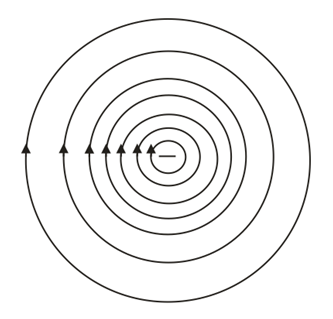
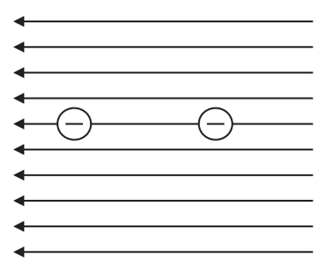
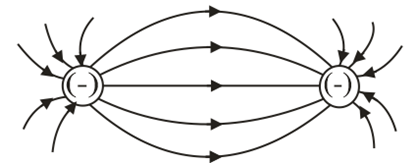
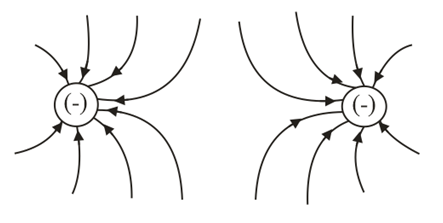
Important Questions on Electrostatics
(figures are schematic and not drawn to scale)
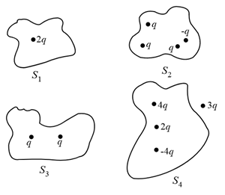
Let the respective electric fluxes through the surfaces be and . Then:
(i) A negative test charge experiences a force opposite to the direction of the field.
(ii) The tangent drawn to a line of force represents the direction of electric field.
(iii) The electric field lines never intersect.
(iv) The electric field lines form a closed loop.
Charges and are at points and of a right-angled triangle . The resultant electric field at point is perpendicular to the hypotenuse, then is proportional to:
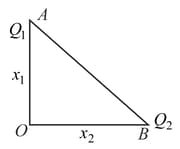
The electric field lines on the left have twice the separation on those on the right as shown in figure. If the magnitude of the field at is , what is the force on charge kept at


Figure shows three arrangements of electric field lines. In each arrangement, a proton is released from rest at point A and then accelerated through point B by the electric field. Points A and B have equal separations in the three arrangements. If and are linear momentum of the proton at point B in the three arrangement respectively, then
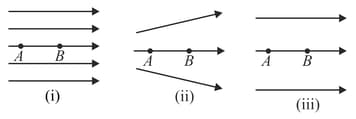
A small point mass carrying some positive charge on it, is released from the edge of a table. There is a uniform electric field in this region in the horizontal direction. Which of the following options then correctly describe the trajectory of the mass ? (Curves are drawn schematically and are not to scale)

